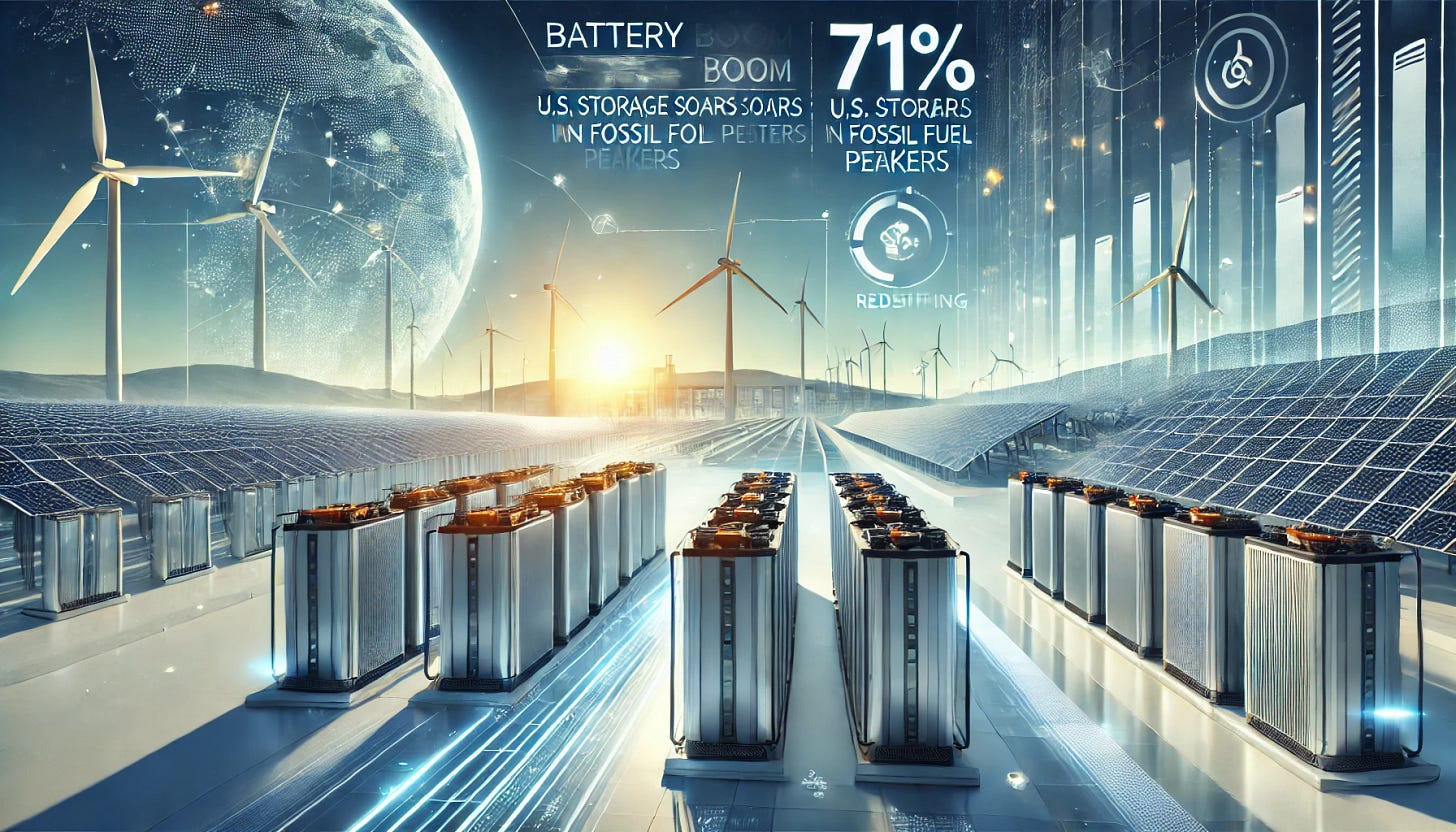Battery Boom
U.S. Storage Soars 71% in 2024, Redefining the Role of Fossil Fuel "Peakers"
𝙒𝙝𝙖𝙩 𝙘𝙖𝙪𝙜𝙝𝙩 𝙢𝙮 𝙖𝙩𝙩𝙚𝙣𝙩𝙞𝙤𝙣? The U.S. achieved a 71% increase in battery storage capacity in 2024, reaching 24 gigawatt-hours, significantly enhancing the integration of renewable energy sources into the power grid according to a report from the AP.
𝙒𝙝𝙮 𝙞𝙩 𝙢𝙖𝙩𝙩𝙚𝙧𝙨? The emergence and acceleration of battery storage capacity, and its complementary relationship with solar and wind capacity, is disrupting the historical the dispatch pattern and economics of gas-fired “peakers”.
Battery storage capacity directly challenges the role of fossil fuel-based "peaker" plants as a daily complement to load patterns and generation patterns of renewable resources like solar and wind.
How this disruption play out - locally and regionally - is one of the big themes for 2025 and beyond.
𝘿𝙚𝙩𝙖𝙞𝙡𝙨:
• States like California, Texas, Arizona, and Nevada are leading the charge, while many others lag behind, with only 18 states currently operating significant battery storage facilities.
• Batteries are typically deployed during evening peak demand (4–9 PM) when energy use is high, but solar output drops. They are charged midday (11 AM–3 PM) when solar production peaks and used for early morning demand (6–9 AM) or grid stabilization, ensuring efficient, reliable power and reducing reliance on fossil fuel peaker plants.


